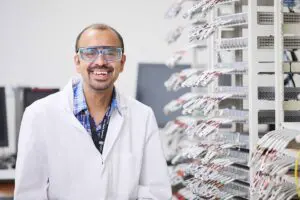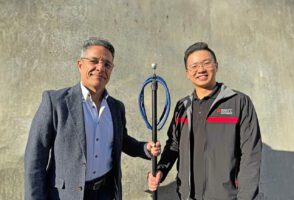Researchers at Western Australia’s Curtin University are currently working on an innovative thermal battery which will be a key component in allowing solar power systems to produce electricity overnight – a breakthrough which could allow solar systems to be used as a viable alternative to fossil fuels in commercial and heavy industries around the world.
The new thermal battery project – led by Professor Craig Buckley from Curtin’s School of Electrical Engineering, Computing and Mathematical Sciences and run in collaboration with international renewable energy companies United Sun Systems and ITP Thermal – stems from a thermal battery which was part of the Concentrated Solar Power (CSP) system being developed by United Sun Systems.
It benefits from a $1 million Federal Government grant through the Global Innovation Linkages Program.
“Storage has long been a stumbling point for renewable energy, but our prototype thermal battery is able to store and, as required, release solar energy without reliance on sunlight at all times,” Professor Buckley said.
“The battery uses a high-temperature metal hydride or metal carbonate as the heat storage medium and a low temperature gas storage vessel for storing the hydrogen or carbon dioxide.
“At night, and in times of cloud cover, hydrogen or carbon dioxide is released from the gas storage vessel and absorbed by the higher temperature metal to form a metal hydride/metal carbonate, which produces heat used to generate electricity.”
The project is working towards developing a solar power system that is able to produce electricity 24-hours a day, seven days a week, and is commercially viable for industry.
“As with the lithium battery systems that Curtin is also developing, the deployment of a cost-effective energy storage system using thermal batteries will revolutionise the landscape of renewable energy production world-wide by allowing renewables to truly compete with fossil fuels,” explained Curtin University Deputy Vice-Chancellor Research Professor Chris Moran.
“While a lithium battery stores electrical energy that can be used to provide electricity when the sun is not shining, this thermal battery stores heat from concentrated solar thermal, which can be used when the sun is not shining to run a turbine to produce electricity.”
Curtin University is hoping to combine their new thermal battery with dish-Stirling systems which can provide up to 46 kW of power and are ideal for powering remote energy intensive industries such as mine sites.
These industry sites often require power on demand and as required and are thus currently reliant on fossil fuel generation to meet these requirements – be that through traditional large-scale infrastructure or small-scale fossil fuel-powered generators.
However, if a thermal battery can be combined with a dish-Stirling Concentrated Solar Power (DS-CSP) system, then the opportunity for companies to transition away from fossil fuels will be all that easier.










